Seed beads
Seed beads, sometimes referred to as ‘rocailles’, are tiny pieces of glass with a hole through the centre. They come in different sizes, the most common of which are 15, 11, 8 and 6. The smaller the size number, the larger the bead…
Fun fact: I have heard two different theories as to what the size number means. One school of thought suggests the size number is a rough indication of the number of those beads that, when lined up, would stretch for an inch. So, for example, if you were to line up 11 size 11 beads, they would measure an inch. The other school of thought suggests that the size number is a reference to the size of the dowel used in manufacturing the beads.
A size 15 seed bead is approximately a millimetre in size, but believe it or not, this is not the tiniest bead. You can buy size 18 or even size 20 if you really fancy testing your eyesight!
Size 11 beads are just under 2mm, size 8 about 3mm and size 6 about 4mm. This is a very rough guide, though.
Manufacturers of seed beads
Traditionally, the main manufacturing centres for seed beads have been Japan (Miyuki, Matsuno or Toho manufacturers) and the Czech Republic. As a rough guide, the Japanese manufactured seed beads tend to be a little more uniform and regular in shape. However, this means they are also more expensive than their European counterparts.
Having said that, all ‘rocaille’ varieties will be a little uneven. The Chinese market is fast emerging as a big bead supplier, but in general their quality is not quite at the top end. If you are interested in learning more about the differences between the seed bead brands, then take a look at this blog. You may be surprised at what you read!
Rocailles versus Cylinder Beads
If you are looking for real regularity, then you want cylinder beads.
As the name suggests, these are a pretty regular cylinder and, generally, these beads have slightly larger holes.
As with other varieties of bead, ‘cylinder’ refers to a general category. The most commonly used brand within that category is manufactured by the Miyuki company and branded ‘Delica’ beads. You will also find cylinder beads manufactured by the TOHO company, under the brand name of AIKO beads.
Cylinder beads are a joy to use for techniques like brick stitch and peyote stitch. Their regularity gives a really geometric, neat appearance. If you are looking for something a little more organic, then go for the rocailles.
How to choose seed beads
If a tutorial specifies a particular brand of seed bead, then stick with that. Chances are, the designer has a good reason for using that brand. If the materials list is a little more general, then play around with the varieties you have in your stash.
When you buy beads, keep a note of the brand you are buying. As you gain more experience, you will get to feel how different brands vary. This allows you to work out which brand you prefer for which type of technique or style of beadwork.
Although it’s always good to take advice, at the end of the day, your choice of seed bead can be a very personal preference. So never be afraid to experiment. It is, however, a good idea to try and use the same brand for a single project.
If you try mixing say, one colour in Matsuno brand and a different colour in Toho brand, even though both brands are size 11 beads, you may find that there is a minute difference in size between the brands. This only becomes noticeable as your beadwork grows and consequently becomes uneven. Any minute differences in size or shape are magnified as you add the beads together in larger projects, so take care!
If you want to see me prove that point, then read this blog.
What can you do with seed beads?
Seed beads are the staple material for bead-weaving, bead embroidery and French Beading. They can also be used as spacer beads in stringing and they may be used in a lot of wirework techniques
Depending on the techniques you use, they can be made into flat wearable jewellery like the cuff bracelet shown. Or you can create 3-dimensional objects like miniature cakes for special occasions, or flowers.
For me, there is nothing quite like the flexibility of basic seed beads – I can just let my imagination fly and create anything I can dream up. If you want to try some of the ideas shown, the tutorials for all these projects can be found by clicking on the links.


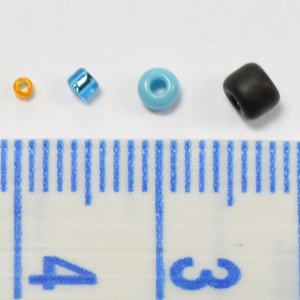
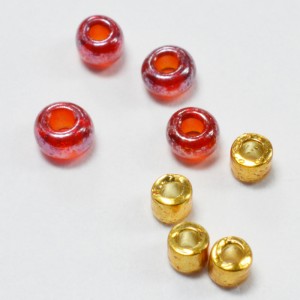
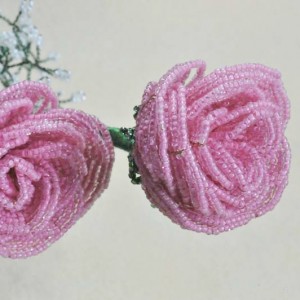
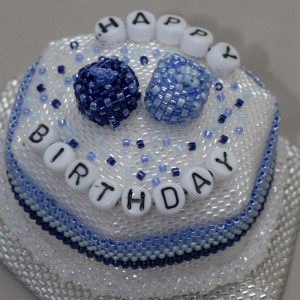
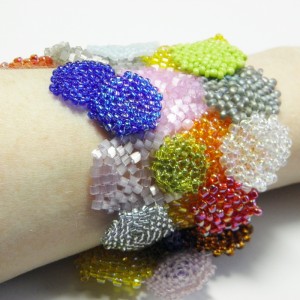

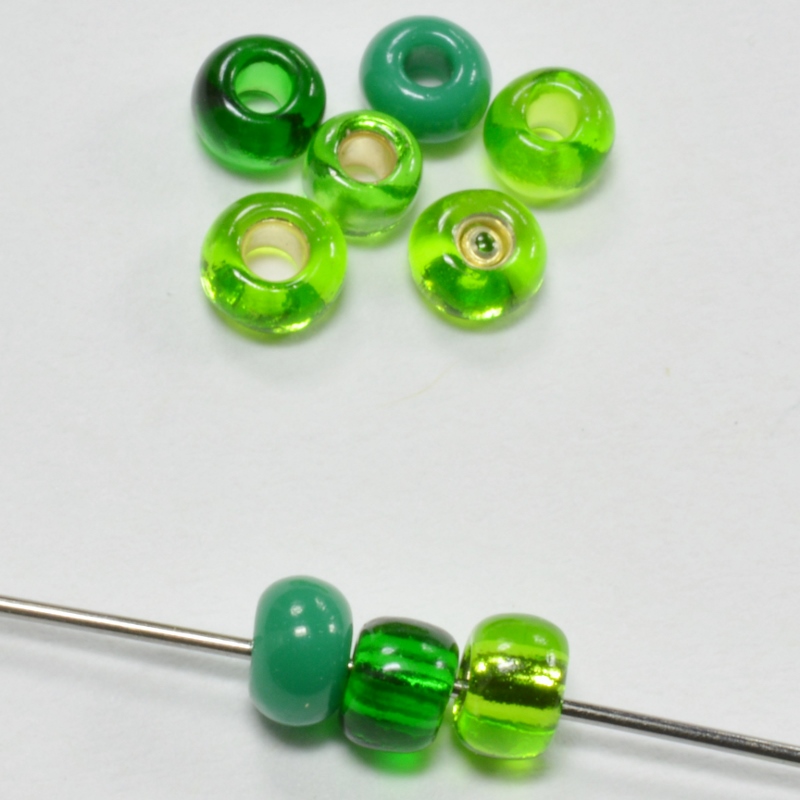


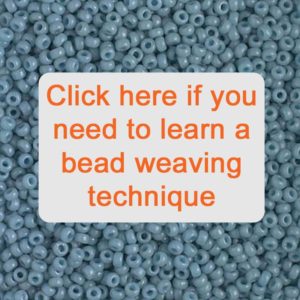

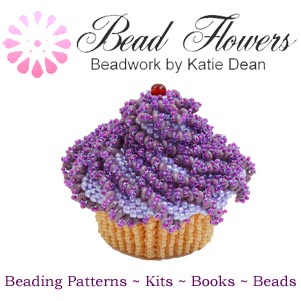


Thank you for the article
I wondered if could tell me about size 11 beads (I am looking at toho) – how many roughly would I need for 26 in x 26 in in grams
I don’t know of a formula to calculate that. I suggest you bead a 1″ by 1″ square, using the TOHO beads, weigh that to find out how many grams it is. Then, multiply up to the size you want. If you’re working from a pattern, then that should tell you how many beads you need.
I am making crochet flower brooches for my Bible study class, and want to finish them off with size 11 seed beads. What is a good size beading needle to use for these tiny beads?
They sound lovely, Sandra! I would recommend a size 10 beading needle for size 11 seed beads. Size 10 needles are a standard size for beading and will work well with most beads. So, I hope that helps.
I HEARD THAT SIZE 11/0 OR 2mm SEED BEADS ARE HE BEST SIZE FOR BRACELET TYPE PROJECTS. IS THIS TRUE????
It depends on what sort of bracelet project you have in mind. There are many, many “bracelet type” projects, and different styles work best with different beads. So, there is no general rule to be applied to all bracelets.
I’m just putting my supplies together for using a bead loom and I’ll be creating my own designs. Which type of bead works best on a loom – rocailles or cylinder? And what size do you recommend? (My designs will include some italic/cursive lettering, so they won’t be “straight” lines – if that makes sense.) Thanks for your time!
Lovely! Both rocailles and delicas work equally well on a loom. Delicas will give you a more regular, precise finish, which some people like better, but isn’t essential. I would normally work with size 11, but the bead size can also depend on how big you want the finished piece to end up. You can enlarge or reduce the size by simply changing the size of beads you use, working from the exact same pattern. So, there are no hard and fast rules for this – it all depends on your personal preference and personal needs. Have fun creating!